So why Alexander Hamilton...?
Alexander Hamilton Biography Lawyer, Military Leader, Economist, Journalist, Political Scientist, Government Official (c. 1755–1804)
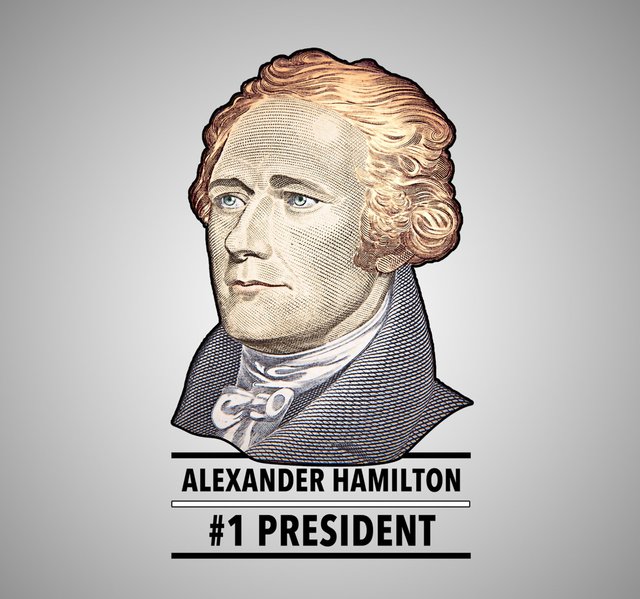
Alexander Hamilton, a delegate to the Constitutional Convention and major author of the Federalist papers, was the United States' first secretary of the treasury.
Who Was Alexander Hamilton?
Alexander Hamilton born in the British West Indies, and later became General George Washington's assistant. In 1788, as one of America's Founding Fathers, he convinced New Yorkers to agree to ratify the U.S Constitution. Hamilton then served as the nation's first secretary of the treasury, from 1789 to 1795.
Where Was Alexander Hamilton Born?
Alexander Hamilton was born on the island of Nevis in the British West Indies, on January 11, 1755 or 1757 (the exact date is unknown). Hamilton's parents were Rachel Fawcett Lavien, who was of British and French Huguenot descent, and James Hamilton, a Scottish trader.
At the time of Alexander's birth, Rachel was married to John Lavien, a much older merchant whom she had been pressured to wed by her parents when she was a teenager. They had a son, Peter together.
Lavien was abusive to Rachel and had spent nearly all the money she had inherited when her father died in 1745. During their tumultuous relationship, by Danish law, he even had her imprisoned for several months for adultery.
When she was released, instead of returning to her husband and son, the independent-minded Rachel fled the troubled marriage and moved to St. Kitts. It was there she met and moved in with James Hamilton, with whom she had another son, James (Alexander's older brother), who was born in 1753.
After moving back to St. Croix, James Sr. abandoned the family when Alexander was a boy, leaving Rachel and her sons impoverished. John Adams would one day come to characterize Hamilton's rise from humble beginnings by describing the young Hamilton as "the bastard brat of a Scottish peddler."
Determined to improve his lot in life, Hamilton took his first job at the tender age of 11, not long after his father left. But the family was soon dealt another sad blow. After working tirelessly to make ends meet, his mother became ill and died in 1768 at the age of 38.
Working as an accounting clerk in an mercantile in St. Croix, the bright and ambitious young lad quickly impressed his employer. Through this early experience, Alexander Hamilton was first exposed to international commerce (including the importing of slaves) and learned about the business of money and trade.
Hamilton's boss, a businessman named Nicolas Cruger, so valued Hamilton's acumen when it came to accounting that he and other businessmen pooled their resources with a minister and newspaper editor named Hugh Knox to send Hamilton to America for an education. Hamilton had impressed Knox with an eloquent letter he had written describing a ferocious hurricane that had hit the island in 1772.
In 1773, when he was around 16 years old, Hamilton arrived in New York, where he enrolled in King's College (later renamed Columbia University). Despite his gratitude toward his generous patrons, with the American colonies on the brink of a revolution, Hamilton was drawn more to political involvement than he was to academics. In 1774, he wrote his first political article defending the Patriots' cause against the interests of pro-British Loyalists.
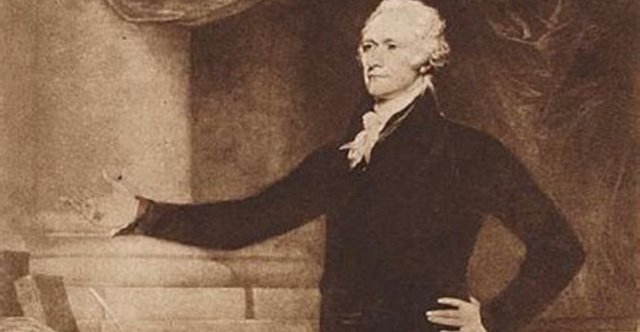
A quick learner, Hamilton deemed himself quite capable of becoming a self-made man. Intent on learning through hands-on experience, he left King's College before graduating to join forces with the Patriots in their protest of British-imposed taxes and commercial business regulations.
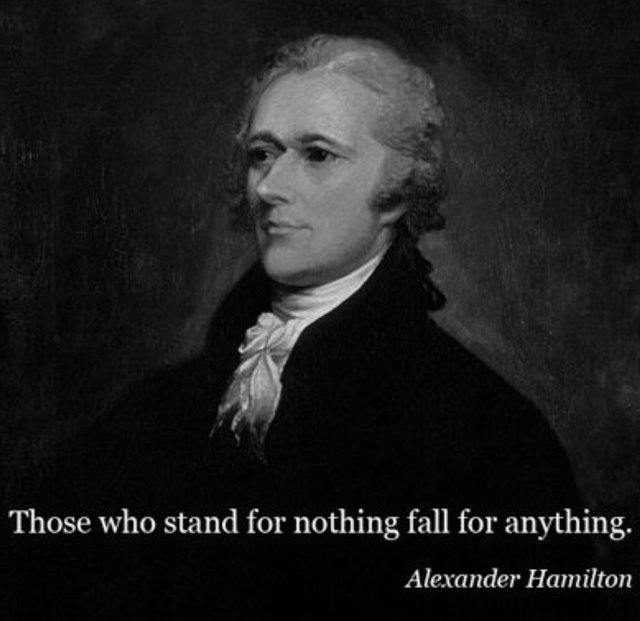
Military Career
In 1775, when the Revolutionary War began, Hamilton became part of the New York Provincial Artillery Company and fought in the battles of Long Island, White Plains and Trenton.
In 1777, after Hamilton fought in that year's battles of Brandywine Creek, Germantown and Princeton, he was promoted to lieutenant colonel of the Continental Army. During his early service in the fight for American independence, he caught the attention of General George Washington, who made Hamilton his assistant and trusted adviser.
For the next five years, Hamilton put his writing skills to work. He wrote Washington's critical letters, and composed numerous reports on the strategic reform and restructuring of the Continental Army. Around the same time, Hamilton married Elizabeth Schuyler, who was from an affluent New York family.
Growing restless in his desk job, in 1781, Hamilton convinced Washington to let him taste some action on the battlefield. With Washington's permission, Hamilton led a victorious charge against the British in the Battle of Yorktown.
Cornwallis's surrender during this battle would eventually lead to two major negotiations in 1783: the Treaty of Paris between the United States and Great Britain, and two treaties signed at Versailles between France and Britain and Spain. These treaties and several others comprise the collection of peace agreements known as Peace of Paris, officially marking the end of the American Revolutionary War.
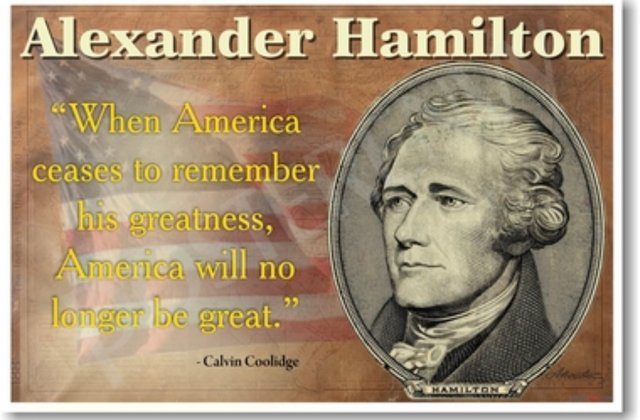
While serving as an adviser for George Washington, Hamilton had come to realize Congress' weaknesses, including jealousy and resentment between states, which, Hamilton believed, stemmed from the Articles of Confederation. (He believed that the Articles — considered America's first, informal constitution — separated rather than unified the nation.)
Hamilton left his adviser post in 1782, convinced that establishing a strong central government was the key to achieving America's independence. It would not be the last time that Hamilton worked for the U.S. Army.
In 1798, Hamilton was appointed inspector general and second in command, as America geared up for a potential war with France. In 1800, Hamilton's military career came to a sudden halt when America and France reached a peace agreement.
Law Career
Hamilton left his position as an adviser to George Washington to study law. After completing a short apprenticeship and passing the bar, he established a practice in New York City.
The majority of Hamilton's first clients were the widely unpopular British Loyalists, who continued to pledge their allegiance to the King of England. When British forces took power over New York State in 1776, many New York rebels fled the area, and British Loyalists, many of whom had traveled from other states and were seeking protection during this time, began to occupy the abandoned homes and businesses.
When the Revolutionary War ended, nearly a decade later, many rebels returned to find their homes occupied, and sued Loyalists for compensation (for using and/or damaging their property). Hamilton defended Loyalists against the rebels.
In 1784, Hamilton took on the Rutgers v. Waddington case, which involved the rights of Loyalists. It was a landmark case for the American justice system, as it led to the creation of the judicial review system. He accomplished another history-making feat that same year, when he assisted in founding the Bank of New York. In defending the Loyalists, Hamilton instituted new principles of due process.
Hamilton went on to take an additional 45 trespass cases, and proved to be instrumental in the eventual repeal of the Trespass Act, which had been established in 1783 to permit rebels to collect damages from the Loyalists who had occupied their homes and businesses.
Being a lawyer drew Hamilton further into politics, as he used his profession as a vehicle for achieving his political goals. After serving as secretary of the treasury from 1789 to 1795, he returned to his law practice in Manhattan, distinguishing himself as one of the city's most prestigious attorneys.
Throughout his law career, Hamilton remained actively involved in public and political affairs and ranked among U.S. presidents' most sought-after advisers.
Politics and Government
Hamilton's political agenda entailed establishing a stronger federal government under a new Constitution.
In 1787, while serving as a New York delegate, he met in Philadelphia with other delegates to discuss how to fix the Articles of Confederation, which were so weak that they could not persist in keeping the Union intact. During the meeting, Hamilton expressed his view that a reliable ongoing source of revenue would be crucial to developing a more powerful and resilient central government.
Hamilton didn't have a strong hand in writing the Constitution, but he did heavily influence its ratification, or approval. In collaboration with James Madison and John Jay, Hamilton wrote 51 of 85 essays under the collective title The Federalist (later known as The Federalist Papers).
In the essays, he artfully explained and defended the newly drafted Constitution prior to its approval. In 1788, at the New York Ratification Convention in Poughkeepsie, where two-thirds of delegates opposed the Constitution, Hamilton was a powerful advocate for ratification, effectively arguing against the anti-Federalist sentiment. His efforts succeeded when New York agreed to ratify, and the remaining eight states followed suit.
When George Washington was elected president of the United States in 1789, he appointed Alexander Hamilton as the first secretary of the treasury. At the time, the nation was facing great foreign and domestic debt due to expenses incurred during the American Revolution.
Ever a proponent for a strong central government, during his tenure as treasury secretary, Hamilton butted heads with fellow cabinet members who were fearful of a central government holding so much power. Lacking their state loyalties, Hamilton went so far as to turn down New York’s opportunity to house the nation's capital in favor of securing backing for his economic program, dubbed the "dinner table bargain."
It was Hamilton's belief that the Constitution gave him the authority to create economic policies that strengthened the central government. His proposed fiscal policies initiated the payment of federal war bonds, had the federal government assume states' debts, instituted a federal system for tax collection and would help the United States establish credit with other nations.
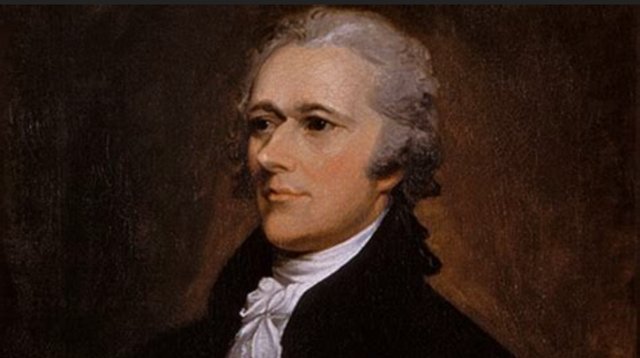
State loyalists were outraged by Hamilton's suggestions, until a compromise was reached during a dinner conversation between Hamilton and Madison on June 20, 1790. Hamilton agreed that a site near the Potomac would be established as the nation's capital, and Madison would no longer block Congress, particularly its Virginia representatives, from approving policies that promoted a more powerful central government over individual states' rights.
Hamilton stepped down from his position as secretary of the treasury in 1795, leaving behind a far more secure U.S. economy to back a strengthened federal government.
Aaron Burr and Alexander Hamilton
During the 1800 presidential elections, Thomas Jefferson, a Democratic Republican, and John Adams, a Federalist, were vying for the presidency.
At the time, presidents and vice presidents were voted for separately, and Aaron Burr, intended to be Jefferson's vice president on the Democratic-Republican ticket, actually tied Jefferson for the presidency.
Choosing Jefferson as the lesser of two evils, Hamilton went to work supporting Jefferson's campaign, and in so doing undermined the attempts of Federalists to garner a tie-breaking win for Burr. Ultimately, the House of Representatives chose Jefferson as president, with Burr as his vice president. However, the standoff had damaged Jefferson's trust in Burr.
Duel
During his first term, Jefferson often left Burr out of discussions on party decisions. When Jefferson ran for re-election in 1804, he decided to remove Burr from his ticket. Burr then opted to run independently for the New York governorship, but lost.
Frustrated and feeling marginalized, Burr hit his boiling point when he read in a newspaper that Hamilton had called Burr "the most unfit and dangerous man of the community."
Burr was infuriated. Convinced that Hamilton had ruined yet another election for him, Burr demanded an explanation. When Hamilton refused to comply, Burr, further enraged, challenged Hamilton to a duel. Hamilton begrudgingly accepted, believing that in doing so he would assure his "ability to be in [the] future useful."
How Did Alexander Hamilton Die?
Alexander Hamilton met Aaron Burr at the duel, which began at dawn on July 11, 1804, in Weehawken, New Jersey. When both men drew their guns and shot, Hamilton was fatally wounded, but Hamilton's bullet missed Burr.
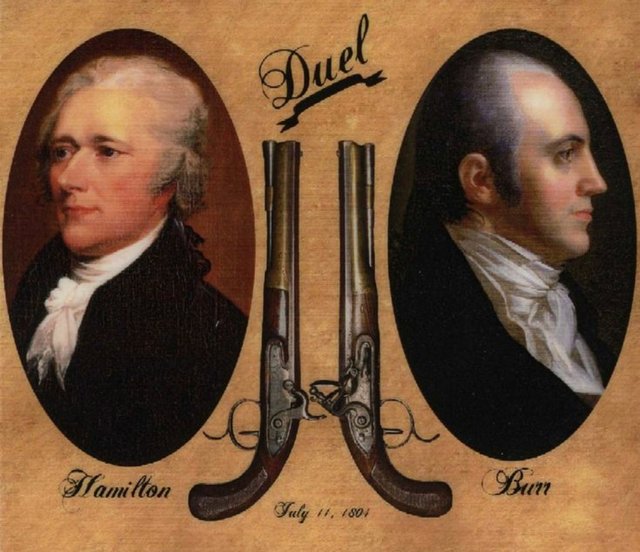
Hamilton, injured, was brought back to New York City, where he died the next day, on July 12, 1804.
Wife and Children
On December 14, 1780, Hamilton married Elizabeth "Eliza" Schuyler, the daughter of Revolutionary War general Philip Schuyler.
By all accounts, they enjoyed a strong relationship throughout their marriage and would have eight children together, despite the revelation that Hamilton had once conducted an extramarital affair with a married woman, Maria Reynolds. Hamilton's affair with Reynolds is considered one of the first sex scandals in the country’s history.
In a letter to his wife dated July 4, 1804, just days before his duel with Burr, Hamilton wrote, “Fly to the bosom of your God and be comforted. With my last idea; I shall cherish the sweet hope of meeting you in a better world. Adieu best of wives and best of Women. Embrace all my darling Children for me.”
Eliza, who lived for 50 years after the death of her husband, would dedicate her life to preserving his legacy.
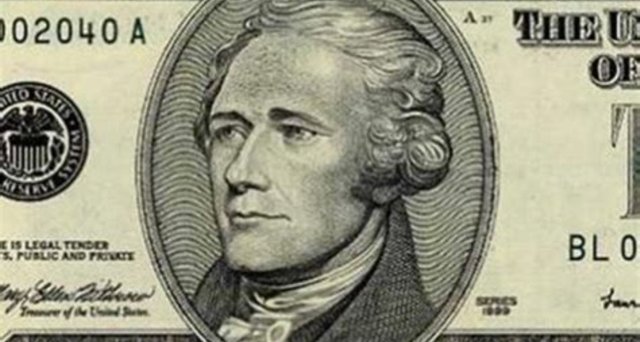
Highly rEsteemed!
mogga... #
I looked up Frank Bacon and hound this https://frankbacon.com/about/
That was a very interesting read.. cheers
@hammyquinn, thank you for supporting @steemitboard as a witness.
Click on the badge to view your Board of Honor.
Once again, thanks for your support!
Do not miss the last post from @steemitboard:
Congratulations @hammyquinn! You have completed the following achievement on the Steem blockchain and have been rewarded with new badge(s) :
Click here to view your Board
If you no longer want to receive notifications, reply to this comment with the word
STOPDo not miss the last post from @steemitboard:
Vote for @Steemitboard as a witness and get one more award and increased upvotes!
To listen to the audio version of this article click on the play image.

Brought to you by @tts. If you find it useful please consider upvoting this reply.